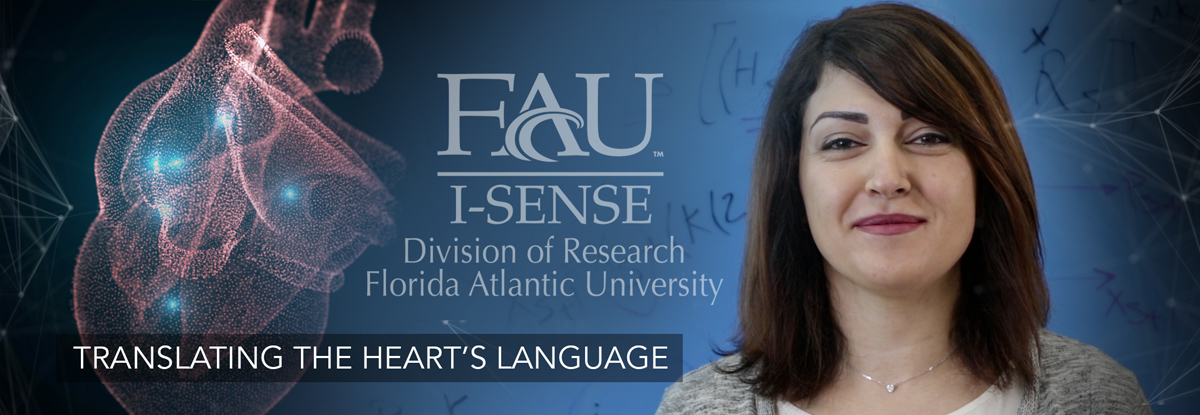Understanding the Heart’s Unique Language
Our heart is the hardest-working muscle in our body. Always moving, never resting, it transports life-sustaining oxygen to our brain and has its own unique language of electrical signals. Behnaz Ghoraani, Ph.D., an Institute for Sensing and Embedded Network Systems Engineering Fellow, is an expert in translating these signals into information that can design deeply specialized treatments.
Ghoraani and her team of physicians and mathematicians are developing novel, low-risk, customized algorithms that can help pinpoint the source of atrial fibrillation, or A-fib. They’re using signal analysis and pattern recognition, combined with mathematical, model-based guidance systems that hone in on its source. Imagine translation software that also has tracking capabilities to read the heart’s electrical impulses when it isn’t functioning properly.
A-fib is one of the most common heart rhythm disorders, affecting more than 2.3 million Americans who consequently suffer a loss of lifestyle, mobility and potentially death. People with A-fib experience a rapid and chaotic heartbeat caused by unstable electrical signals in their heart’s atria, its upper chamber. These spastic signals cause it to beat erratically, putting the heart under enormous stress and making the person feel continually exhausted.
“The developed algorithms can help physicians better understand what’s going on in the heart,” Ghoraani said. “We’re doing more than just sensing electrical signals, we’re translating them so the therapy can be guided precisely to where it’s needed and therefore is more effective.”
This targeted approach significantly reduces, and may even eliminate, the destruction of healthy cardiac tissue, which is often a byproduct of the current treatment. Typically, physicians and electro-physiologists now access the atria by catheter in a process called A-fib ablation. This procedure uses cauterization to establish a roadblock of sorts made of scar tissue. In theory, the scar tissue blocks erratic signals from entering the atria, restoring normal cardiac rhythms. Unfortunately, it only works about half the time.
It’s basic cause and effect. This procedure is unsuccessful mainly because it fails to eliminate the source of the irregularity. Nowadays, treatments work on the effect without addressing the cause. Targeting and eliminating the cause of erratic signals in the atria is key to improving outcomes after A-fib ablation.
“Each person’s heart is unique and dynamic,” Ghoraani said. “We have to find a way to translate the heart’s electrical signals and customize treatments to address each individual’s needs, rather than continue to use a generalized ablation procedure.”
She continues to develop signal and image processing techniques to characterize the human A-fib mechanism, in addition to developing signal analysis algorithms for electrocardiogram, electroencephalogram, audio and speech data.
“Signals from the human body communicate with us,” Ghoraani said. “We’re applying engineering principles to better understand what our bodies are trying to tell us and solve problems in human physiology. That’s the fascinating part of this process.”
If you would like more information, please contact us at dorcommunications@fau.edu.
